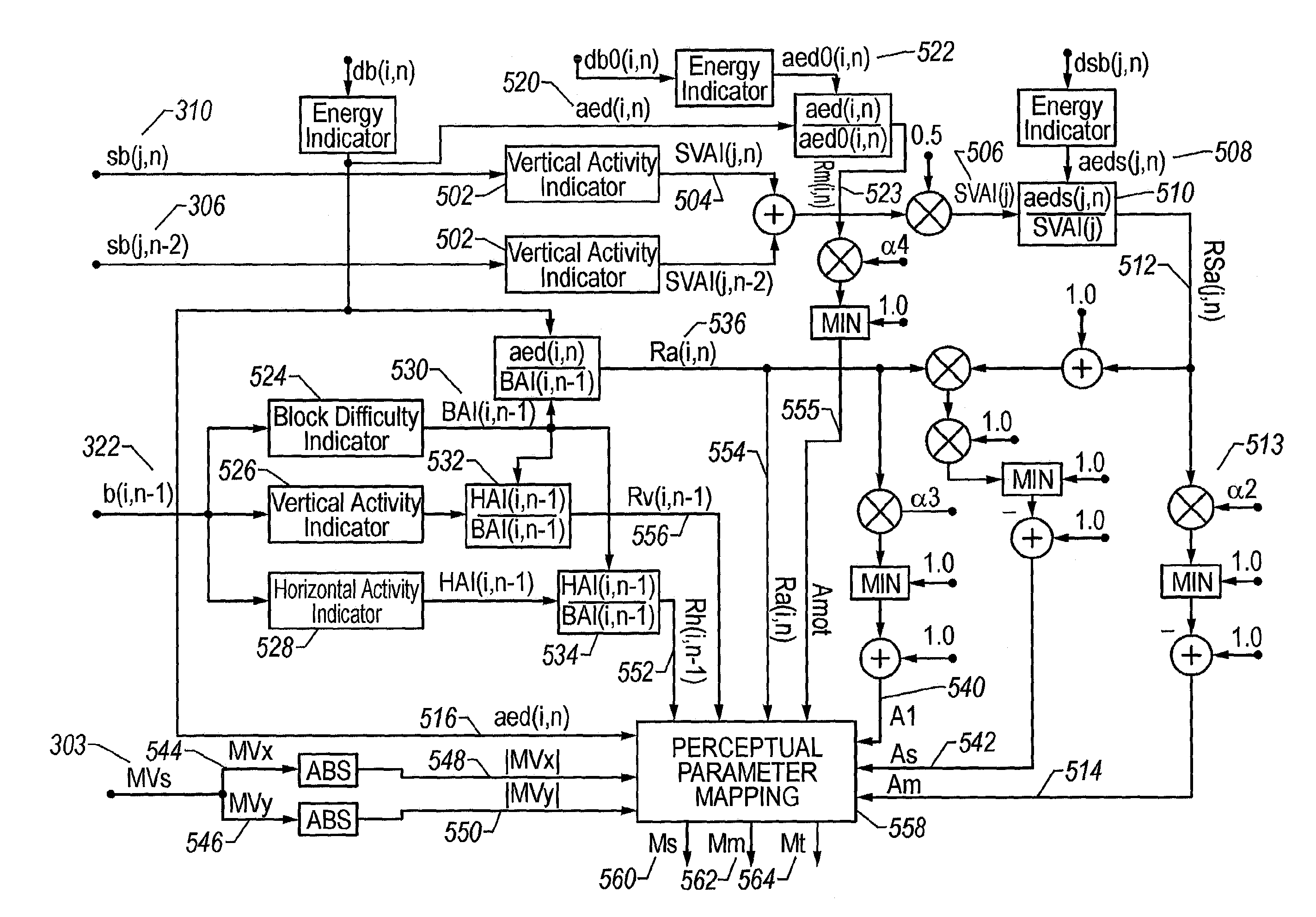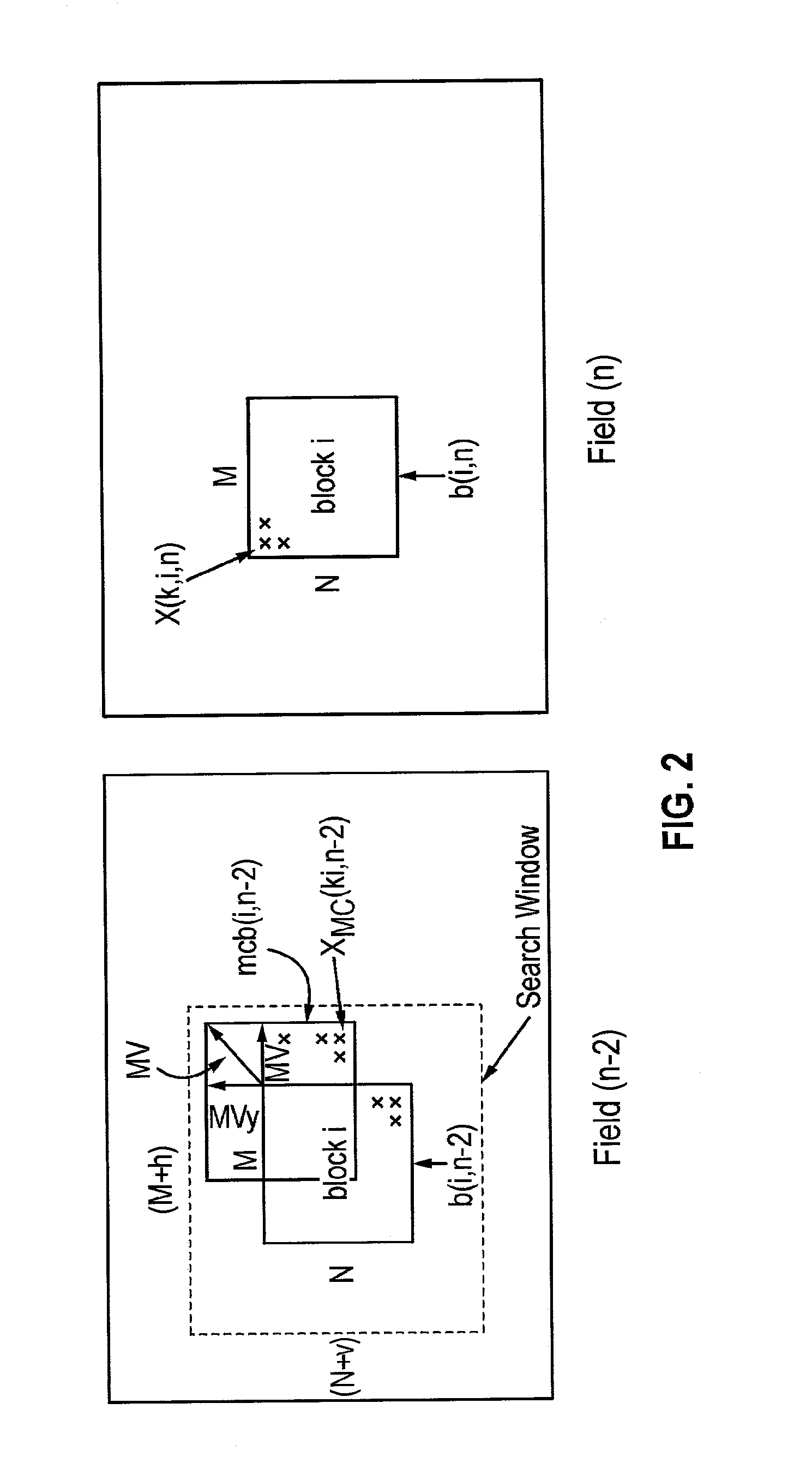Video data de-interlacing using perceptually-tuned interpolation scheme
a perceptual-tuned interpolation and video data technology, applied in the field of display devices, can solve the problems of inability to implement suitable algorithms on a single stb integrated circuit, the size of a motion window, and the inability of most sophisticated arbitration procedures to keep up with the volume of data, so as to minimize processing power, reduce the requirement of frame storage, and improve the quality of the de-interlacer
- Summary
- Abstract
- Description
- Claims
- Application Information
AI Technical Summary
Benefits of technology
Problems solved by technology
Method used
Image
Examples
Embodiment Construction
[0039]The following sets forth a detailed description of a mode for carrying out the invention. The description is intended to be illustrative of the invention and should not be taken to be limiting. A de-interlacing architecture is taught. The de-interlacing architecture adopts a perceptual model to measure membership probabilities for a collection of image samples of an interlaced video source with respect to extracted static, motion, and texture image components of the same collection. The probabilities are used to prioritize contributions from the three image components and produce a progressive video sequence which is a summation of the portions of the aforementioned components.
[0040]Consider field (n−1) which together with a field immediately in past or future would form an interlaced frame. Index (n−1) defines the temporal location of the field (n−1). In order to convert the scan rate of field (n−1) to a progressive scan rate, field (n−1) and two adjacent fields in past (fiel...
PUM
 Login to View More
Login to View More Abstract
Description
Claims
Application Information
 Login to View More
Login to View More - R&D
- Intellectual Property
- Life Sciences
- Materials
- Tech Scout
- Unparalleled Data Quality
- Higher Quality Content
- 60% Fewer Hallucinations
Browse by: Latest US Patents, China's latest patents, Technical Efficacy Thesaurus, Application Domain, Technology Topic, Popular Technical Reports.
© 2025 PatSnap. All rights reserved.Legal|Privacy policy|Modern Slavery Act Transparency Statement|Sitemap|About US| Contact US: help@patsnap.com



